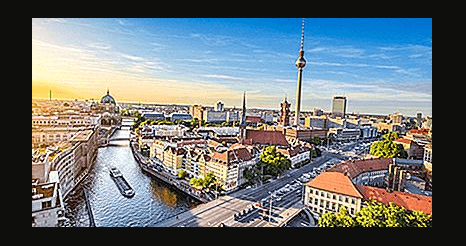What Is The Capital Of Germany?
With an area of 344.3 square miles, Berlin, the capital of Germany, is the largest city in the country. Berlin is also one of the most densely populated cities in the European Union with a metropolitan population of over six million people as of 2016.

About 95% of people living in Berlin are of German descent. Despite being notorious for the Berlin Wall of the late 20th century, Berlin is one of the most visited cities in the European Union, attracting millions of visitors annually. Berlin has been an important city both in the past and in modern times, playing a role in both two major world wars and the Cold War.
History of Berlin
Albert the bear, the Margrave of Brandenburg, founded Berlin around 1157. Archaeological evidence shows signs of human habitation as early as the 9th millennium BC. German tribes such as Semnones and Burgundians built villages around modern Berlin around 500BC. people of Slavic descent settled in Berlin in the 6th century and are credited as the founders of the name “Berlin”.
German merchants occupied Berlin during the 12th century as the city slowly grew into an important city. Berlin was significantly devastated by the Thirty Years ‘ War between 1618 and 1648. Recovery and growth for the city occurred in the 18th century when it became the capital of the kingdom of Prussia under Frederick III.
Berlin’s location at the intersection of the first trade routes made it one of the most important commercial centers of the time. After the establishment and growth of the Prussian empire, Berlin played an important political role as the capital of Prussia. Later rulers after the Prussian Kingdom made Berlin their political and administrative capital.
The industrial revolution of the 19th century saw the growth of the city into one of the most important economic, political, residential and transportation centers. Its growth continued in the 20th century with new inventions in the field of art, such as architecture, painting and theater. Berlin was one of the leading cities in the field of science, technology, film, art and humanities, as well as higher education in the 20 century.
Division and reunification of Berlin
During the 20th century, Berlin played a key role in Germany’s politics. After the division of Germany into East and West Germany, Berlin was also divided into East and West Berlin. East Germany chose East Berlin as its capital. Berlin remained divided throughout the Cold War. After the fall of the Berlin Wall in 1989 and the reunification of East and West Germany in 1990, Berlin was also reunited and re – established as the political capital of the Federal Republic of Germany.
Modern role of the capital of Germany
Today, Berlin is the capital of the Federal Republic of Germany with the seat of the president of Germany, whose official residence is Schloss Bellevue. The ministries and the Bundesrat are also located in the city. Berlin is considered one of the most important tourist destinations for its rich historical heritage and its many museums and other historical centers.
Attractions in the city include Berlin Fashion Week, Museum Island and the Jewish Museum. Berlin is the seat for several religious organizations, including the Roman Catholic Archbishop of Berlin and the Cathedral of St. Peter. Boris. Several world-class educational institutions are located in the city, such as the Humboldt University of Berlin and the Free University of Berlin. The city of Berlin also serves as a center for transportation, communication and entertainment.

